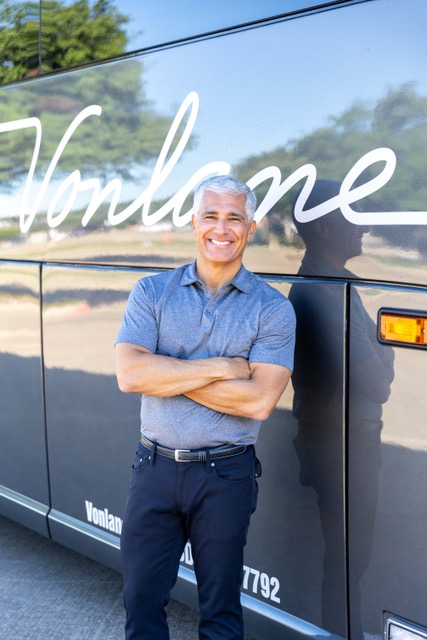
For decades, regional travel in the United States has been trapped between two extremes. At one end, there are short-haul flights that promise speed but often deliver frustration. At the other, there is the personal car, which offers control at the cost of time and energy. Neither serves the modern business traveler particularly well.
This inefficiency persisted because it was familiar. Few questioned the structure. Fewer still sought to redesign it. But Alexander Danza, a Texas-based entrepreneur with a background in accounting and transportation, saw the problem clearly. He recognized that regional travel was broken not by a lack of technology, but by a failure of imagination. In response, he built Vonlane.
What emerged was not a high-tech disruption, but a deeply intentional rethinking of what it means to move with purpose between cities. The quiet success of Danza’s model is less about spectacle and more about precision, service, and long-term thinking.
Foundations in Observation and Restraint
Danza’s early career began in the consulting world. At the firm Arthur Andersen, he spent years understanding the internal workings of businesses across different sectors. Later, as president of Savoya, an executive transportation firm, he became intimately familiar with what high-level travelers value most.
It was not luxury for the sake of luxury. It was reliability, comfort, and a sense that time in motion should not feel wasted. These years helped sharpen Danza’s focus on service quality and operational consistency – lessons that would shape the DNA of Vonlane.
In 2013, he launched the company with a simple idea: create a regional ground travel experience that reflects the needs of today’s professionals. The goal was not to mimic airlines or compete with bus lines. It was to occupy a third space, designed from the ground up for those who travel frequently, work in transit, and value calm over chaos.
A Model Built for Intention, Not Scale
Vonlane’s service stands apart not because of any one flashy feature, but because of how its elements work together. Each coach contains only 22 first-class seats. The seating is generous, with leg rests and personal workspace. Attendants provide onboard service. Wi-Fi is stable. Power outlets are within reach. There is no security line, no gate change, and no need to arrive an hour early.
What may seem like premium add-ons are, in fact, essential parts of the experience. They speak to a specific philosophy: comfort should be a function of clarity, not extravagance. For Danza, designing for the right user meant subtracting friction rather than adding flair.
The company’s boarding locations further reflect this mindset. Vonlane partners with hotels rather than building terminals. This allows passengers to wait in quiet, familiar settings with access to food, restrooms, and seating. It also eliminates the need for costly new infrastructure. By embedding into existing spaces, Danza created a travel model that is both efficient and expandable without being invasive.
Business-Class Logic Without the Airport
Air travel remains dominant for long-distance trips, but its value in the regional space is increasingly questioned. The time saved in the air is often lost on the ground, between parking, security checks, boarding delays, and transport to and from the airport. For routes between cities like Dallas, Austin, Houston, or Nashville and Memphis, the time differential between flying and taking a Vonlane coach can be surprisingly narrow.
The difference lies in the experience. Travelers on Vonlane can stay productive or relaxed for the full duration of their journey. There is no point at which they are disconnected or distracted by logistics. For many business travelers, this continuity is worth more than a shorter flight filled with interruptions.
Danza understood that productivity is not measured only in hours worked. It also includes the mental energy preserved along the way. In that sense, Vonlane is not merely about transportation. It is about extending the conditions of focus and comfort across what is typically considered lost time.
Steady Growth Without Flash
Unlike many transportation startups, Vonlane did not chase aggressive expansion or chase headlines with bold predictions. Its growth has been steady and considered. The company added routes only when demand and operational readiness aligned. From Texas, it moved into key cities in Tennessee and Georgia. It maintained high service standards while expanding access, a balance few mobility providers manage to hold.
This approach reflects Danza’s discipline as a leader. He has consistently prioritized service integrity over rapid scaling. He resisted the temptation to turn a solid regional operation into a national brand overnight. That decision likely preserved the company’s core strengths and allowed it to retain the trust of its target users.
The Legacy of a Different Kind of Builder
Alexander Danza may not be a household name in the startup world. He does not lead with charisma or disruption slogans. But his work has quietly redefined what is possible when transportation is designed around human rhythms rather than mechanical assumptions.
When it comes to fast scaling and disposable solutions, Danza’s legacy is built on something else entirely: patience, precision, and a refusal to accept that what exists is always what’s best. His work with Vonlane shows that meaningful innovation can happen not through noise, but through clarity and that sometimes the most powerful changes come not by doing more, but by doing less, better.